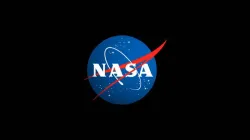NASA Spacecraft successfully communicates with India's Chandrayaan-3 Lander on the Moon
NASA's Lunar Reconnaissance Orbiter (LRO) achieved a laser range measurement using the LRA by successfully detecting signals reflected by it on December 12, 2023. The ranging utilized the Lunar Orbiter Laser Altimeter (LOLA) on the LRO.

A laser instrument aboard a NASA spacecraft in lunar orbit which has successfully sent signals to India's Chandrayaan-3 mission's Vikram lander, as per the US space agency. The laser beam was transmitted and bounced between the Lunar Reconnaissance Orbiter (LRO) and a small device on the Vikram lander, which is positioned near the Manzinus crater in the Moon's south pole region. This successful communication has been marked as a significant advancement in precisely locating targets on the Moon's surface, which has opened the door to new exploration possibilities.
The lander was approximately 100 kilometres away from the LRO during the laser pulses transmitted on December 12 (2023). After the orbiter registered light which has bounced back from a tiny NASA retroreflector aboard Vikram, scientists of NASA knew that their techniques have finally worked.
How do we track the locations of Earth-orbiting satellites from the ground
Sending laser pulses towards an object and measuring how long it takes the light to bounce back is a commonly used way to track the locations of Earth-orbiting satellites from the ground.
The scientists said that they have been using the technique in reverse for sending laser pulses from a moving spacecraft to a stationary one to determine its precise location has many applications at the Moon.
Xiaoli Sun, who led the team at NASA's Goddard Space Flight Center, that developed the retroreflector on Vikram as part of a partnership between NASA and Indian Space Research Organization (ISRO) said, "We've shown that we can locate our retroreflector on the surface from the Moon's orbit."
In a NASA statement, Sun said, "The next step is to improve the technique so that it can become routine for missions that want to use these retroreflectors in the future."
Only 2 inches, or 5 centimetres, wide, NASA's tiny but mighty retroreflector, called a Laser Retroreflector Array, has eight quartz-corner-cube prisms set into a dome-shaped aluminium frame. The device is simple and durable, scientists said that it requires neither power nor maintenance and can last for decades. Its configuration will enable the retroreflector to reflect light coming in from any direction back to its source, said NASA.
ALSO READ: Countdown begins for Japan's Robotic Moon Sniper landing on January 19
Reacting to the development, ISRO said the Laser Retroreflector Array (LRA) on the Chandrayaan-3 lander has begun serving as a fiducial point (precisely located markers for reference) on the Moon.
"NASA's Lunar Reconnaissance Orbiter (LRO) achieved a laser range measurement using the LRA by successfully detecting signals reflected by it on December 12, 2023. The ranging utilized the Lunar Orbiter Laser Altimeter (LOLA) on the LRO. The observation occurred during lunar night time, with the LRO ascending to the east of Chandrayaan-3," the Indian space agency added.
Inputs from PTI
ALSO READ: NASA regains contact with Mars Ingenuity helicopter | All you need to know
